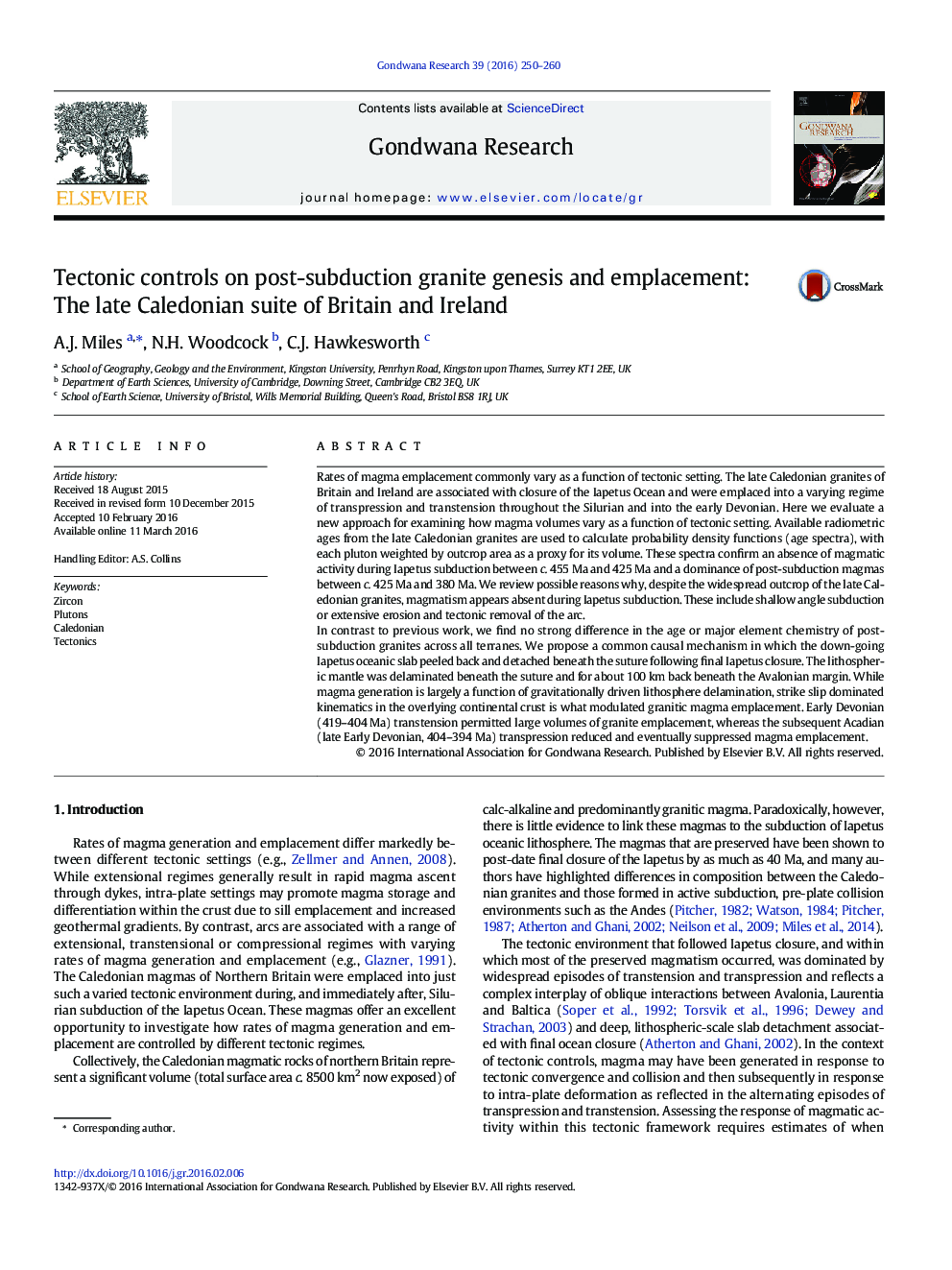| Article ID | Journal | Published Year | Pages | File Type |
|---|---|---|---|---|
| 4726573 | Gondwana Research | 2016 | 11 Pages |
•Zircon age spectra from British Caledonian magmas are weighted according to surface area to investigate tectonic controls on magma generation and emplacement.•The area-weighted age spectra reveal an apparent absence of granitic magmatism during Iapetus subduction and a predominance of post-subduction magmas.•We review the apparent absence of subduction-related magmatism in the context of the poor preservation potential of such settings.•Magma generation was controlled by gravitationally driven kinematics following slab detachment and delamination caused by final subduction of the Iapetus Ocean. Magma emplacement was subsequently modulated by alternating episodes of transpression and transtension in the overlying continental lithosphere.•Area-weighted age spectra offer a valuable means of investigating magmatic-tectonic relations.
Rates of magma emplacement commonly vary as a function of tectonic setting. The late Caledonian granites of Britain and Ireland are associated with closure of the Iapetus Ocean and were emplaced into a varying regime of transpression and transtension throughout the Silurian and into the early Devonian. Here we evaluate a new approach for examining how magma volumes vary as a function of tectonic setting. Available radiometric ages from the late Caledonian granites are used to calculate probability density functions (age spectra), with each pluton weighted by outcrop area as a proxy for its volume. These spectra confirm an absence of magmatic activity during Iapetus subduction between c. 455 Ma and 425 Ma and a dominance of post-subduction magmas between c. 425 Ma and 380 Ma. We review possible reasons why, despite the widespread outcrop of the late Caledonian granites, magmatism appears absent during Iapetus subduction. These include shallow angle subduction or extensive erosion and tectonic removal of the arc.In contrast to previous work, we find no strong difference in the age or major element chemistry of post-subduction granites across all terranes. We propose a common causal mechanism in which the down-going Iapetus oceanic slab peeled back and detached beneath the suture following final Iapetus closure. The lithospheric mantle was delaminated beneath the suture and for about 100 km back beneath the Avalonian margin. While magma generation is largely a function of gravitationally driven lithosphere delamination, strike slip dominated kinematics in the overlying continental crust is what modulated granitic magma emplacement. Early Devonian (419–404 Ma) transtension permitted large volumes of granite emplacement, whereas the subsequent Acadian (late Early Devonian, 404–394 Ma) transpression reduced and eventually suppressed magma emplacement.
Graphical abstractFigure optionsDownload full-size imageDownload as PowerPoint slide
